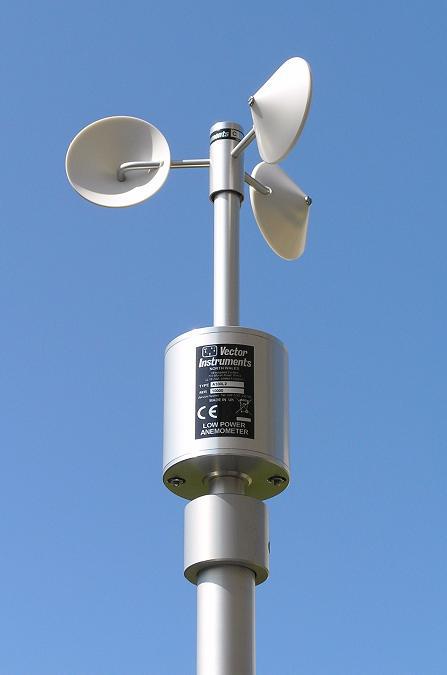Leading Attributes to Search For in an Efficient Anemometer for Accurate Wind Measurement
Exploring the Functions and Advantages of Anemometers for Climate Fanatics and Specialists
Anemometers stand as instrumental tools in the realm of weather monitoring, dealing with both fanatics and skilled specialists alike. These gadgets use a window into the vibrant globe of wind patterns and rates, offering vital data for meteorological evaluation and projecting. From mug anemometers to sonic anemometers, each type brings its unique collection of applications and advantages, clarifying various facets of weather. As we look into the functions and benefits of anemometers, a much deeper understanding emerges not only of dominating weather condition phenomena yet likewise of the wider implications for industries like wind power production and environmental study.
Significance of Anemometers in Weather Condition Surveillance
Anemometers play a critical duty in weather monitoring by offering precise dimensions of wind rate, assisting in projecting and understanding climate patterns. These tools, varying from traditional cup anemometers to modern ultrasonic anemometers, are vital for meteorologists, scientists, and weather condition fanatics alike.

Sorts Of Anemometers and Their Applications
The most common kinds of anemometers consist of cup anemometers, vane anemometers, hot-wire anemometers, and ultrasonic anemometers. Mug anemometers consist of three or 4 mugs installed on horizontal arms that turn with the wind, gauging its speed. Vane anemometers, on the various other hand, use an openly rotating vane to straighten with the wind direction, supplying both wind rate and direction dimensions.
Each type of anemometer has its special advantages and applications. Cup anemometers are appropriate and durable for general climate monitoring, while vane anemometers are favored for directional dimensions. Hot-wire anemometers are sensitive to low air rates, making them perfect for interior settings. Ultrasonic anemometers are non-intrusive and provide high accuracy, frequently made use of in study and specialized weather condition tracking applications. Understanding the features and applications of each kind of anemometer is essential for picking one of the most suitable instrument for certain climate keeping an eye on demands.
Benefits of Making Use Of Anemometers in Projecting
In meteorology, the utilization of anemometers offers important advantages for enhancing the precision of climate projecting. Anemometers determine wind speed and instructions, giving essential data for predicting climate patterns. By including wind data into projecting designs, meteorologists can better understand the activity of weather condition systems, expect changes in climatic conditions, and issue extra exact forecasts.
Moreover, anemometers play a vital function in useful source evaluating potential weather condition dangers. Monitoring wind rates helps forecasters forecast serious weather condition events such as storms, twisters, and winter tornados with greater precision. This early warning system makes it possible for imp source authorities to provide timely signals and apply needed precaution, lowering the threats to life and building.
In addition, anemometers assist in enhancing renewable power manufacturing. By evaluating wind patterns, meteorologists can recognize ideal locations for wind farms and anticipate power outcome, adding to the reliable generation of wind power.

Anemometers in Wind Energy Production
Offered the vital duty anemometers play in offering precise wind information for weather projecting and threat assessment, their importance prolongs to the world of wind power production. Anemometers are vital tools in the area of wind power, where the dimension of wind rate and instructions is critical for determining the feasibility and effectiveness of wind turbine setups. By precisely determining wind speeds at varying heights, anemometers help optimize the placement and design of wind turbines to take full advantage of power outcome.
In wind farms, anemometers are tactically placed to collect real-time wind data that is used to assess the possible power manufacturing of a site. This data contributes in identifying the economic viability of wind power tasks and in projecting energy generation to ensure grid security. In addition, anemometers help in keeping an eye on wind conditions to optimize generator efficiency, avoid damage from high winds, and ensure the safety and security of employees operating in the vicinity of wind generators.
Enhancing Weather Condition Understanding With Anemometers

Anemometers play a crucial function in improving our understanding of microclimates. These localized weather condition conditions can vary considerably from wider regional projections, making it important to have exact information for certain areas. anemometer. By tactically placing anemometers in various areas, scientists can gather detailed details on exactly how wind acts in different surfaces, urban atmospheres, or bodies of water
Furthermore, anemometers add to improving weather condition projecting versions by supplying real-time data on wind actions. This details is especially valuable for forecasting serious weather occasions, enhancing farming methods, and supporting sectors like air travel and maritime navigating. Generally, anemometers are vital tools that allow us to dig much deeper right into the complexities of weather condition systems, ultimately bring about more exact predictions and better-informed choices.
Verdict
In verdict, anemometers play an essential role in weather condition monitoring and forecasting by determining wind rate and instructions. Anemometers likewise have applications in wind energy production, additional highlighting their relevance in both weather forecasting and renewable energy sectors.
From cup anemometers to sonic anemometers, each type brings its special collection of benefits and applications, losing light on numerous facets of atmospheric conditions. These instruments, ranging from traditional cup anemometers to modern ultrasonic anemometers, are vital for meteorologists, scientists, and weather condition lovers alike. The most typical kinds of anemometers consist of cup anemometers, vane anemometers, hot-wire anemometers, and ultrasonic anemometers. Cup anemometers are robust and suitable for general weather monitoring, while vane anemometers are preferred for directional dimensions. Anemometers are crucial tools in the area of wind energy, where the measurement of wind speed and direction is crucial for determining the feasibility and efficiency of wind generator installments.